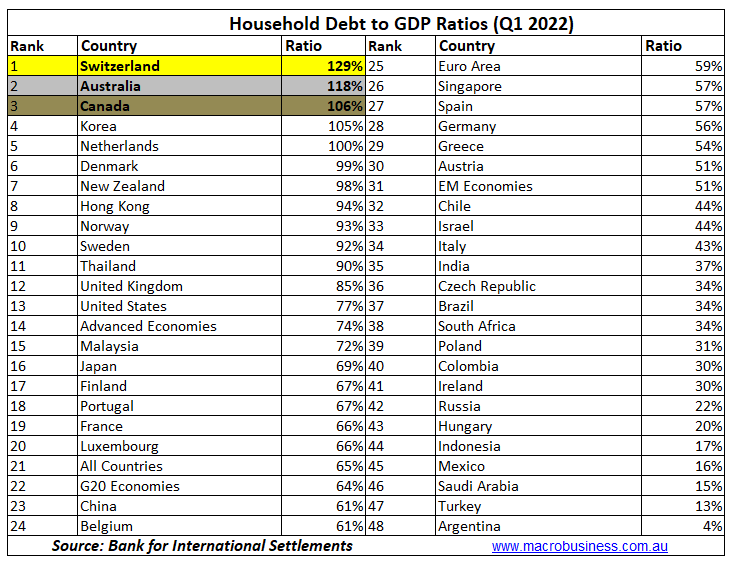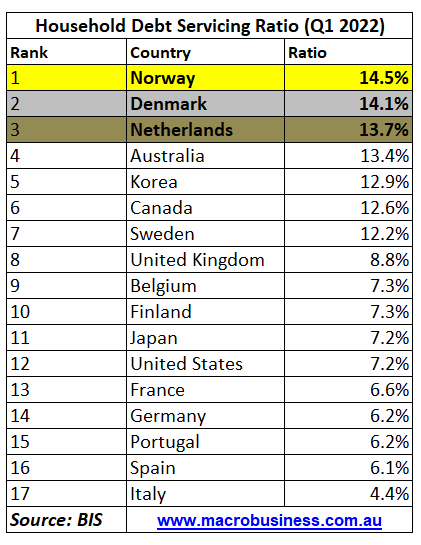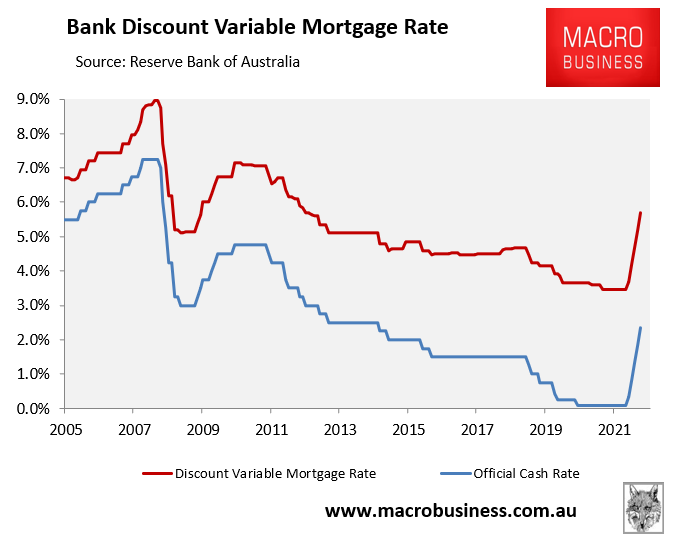The Bank for International Settlements (BIS) released global household debt statistics for the March quarter of 2022, which revealed that Australia’s total household debt is the second highest in the world when measured against gross domestic product (GDP).
As shown in the table below, Australia’s debt-to-GDP ratio was 118% in the March quarter, behind only Switzerland at 129%:

Australia takes silver medal for household debt.
The good news is that Australia’s share of household income used to service principal and interest debt repayments (13.4%) was only the fourth highest out of the countries surveyed, behind Norway (14.5%), Denmark (14.1%) and the Netherlands (13.7%):

13.4% of Aussie household income was used to repay debt in Q1.
That’s where the good news ends. This BIS survey is only current to the March quarter when Australia’s official cash rate (OCR) was a record low 0.1% and Australia’s discount variable mortgage rate was a record low 3.45%.
Since then, the Reserve Bank of Australia (RBA) has lifted the OCR by 2.25%, driving the average discount variable mortgage rate to 5.70% – the fastest rate of increase in Australia’s history:

Highest mortgage rates in a decade.
The RBA’s aggressive monetary tightening has taken Australia’s average discount variable mortgage rate to its highest level since December 2012.
The impact on mortgage holders has already been significant, with average mortgage repayments rising by 30% from their level in April immediately before the RBA’s first OCR hike:

Variable mortgage repayments have already risen 30% in response to the RBA’s aggressive rate hikes.
This month’s monetary policy statement from the RBA stated that “the Board expects to increase interest rates further over the months ahead”.
Therefore, the share of household income going towards debt repayments is certain to lift. The only question is how far?
Regardless, Australia’s world-beating debt loads, alongside the fact that Australia has one of the highest shares of borrowers on variable rate mortgages, has left households badly exposed to the RBA’s aggressive monetary tightening.
For these two reasons, Australian households will be hit much harder than other nations from the global lift in interest rates.

